 EXILE IN GUYVILLEPraise for the series: It was only a matter of time before a clever publisher realized that there is an audience for whom Exile on Main Street or Electric Ladyland are as significant and worthy of study as The Catcher inthe Rye or Middlemarch The series is freewheeling and eclectic, ranging from minute rock-geek analysis to idiosyncratic personal celebration The New York Times Book Review Ideal for the rock geek who thinks liner notes just arent enough Rolling Stone One of the coolest publishing imprints on the planet Bookslut These are for the insane collectors out there who appreciate fantastic design, well-executed thinking, and things that make your house look cool. Each volume in this series takes a seminal album and breaks it down in startling minutiae. We love these. We are huge nerds Vice A brilliant series each one a work of real love NME (UK) Passionate, obsessive, and smart Nylon Religious tracts for the rock n roll faithful Boldtype [A] consistently excellent series Uncut (UK) We arent naive enough to think that were your only source for reading about music (but if we had our way watch out). For those of you who really like to know everything there is to know about an album, youd do well to check out Continuums 33 1/3 series of books PitchforkFor reviews of individual titles in the series, please visitour blog at 333sound.com and our website athttp://www.bloomsbury.com/musicandsoundstudiesFollow us on Twitter: @333booksLike us on Facebook: https://www.facebook.com/33.3books For a complete list of books in this series, see the back of this book Forthcoming in the series: Biophilia by Nicola Dibben Ode to Billie Joe by Tara Murtha The Grey Album by Charles Fairchild Fresh Fruit for Rotting Vegetables by Mike Foley Freedom of Choice by Evie Nagy Live Through This by Anwyn Crawford My Beautiful Dark Twisted Fantasy by Kirk Walker Graves Dangerous by Susan Fast Sigur Ros: ( ) by Ethan Hayden and many more Exile in Guyville Gina Arnold Bloomsbury Academic An imprint of Bloomsbury Publishing Inc 1385 Broadway 50 Bedford Square New York London NY 10018 WC1B 3DP USA UK www.bloomsbury.comBloomsbury is a registered trade mark of BloomsburyPublishing Plc First published 2014 Gina Arnold, 2014 All rights reserved. No part of this publication may be reproduced or transmitted in any form or by any means, electronic or mechanical, including photocopying, recording, or any information storage or retrieval system, without prior permission in writing from the publishers.
EXILE IN GUYVILLEPraise for the series: It was only a matter of time before a clever publisher realized that there is an audience for whom Exile on Main Street or Electric Ladyland are as significant and worthy of study as The Catcher inthe Rye or Middlemarch The series is freewheeling and eclectic, ranging from minute rock-geek analysis to idiosyncratic personal celebration The New York Times Book Review Ideal for the rock geek who thinks liner notes just arent enough Rolling Stone One of the coolest publishing imprints on the planet Bookslut These are for the insane collectors out there who appreciate fantastic design, well-executed thinking, and things that make your house look cool. Each volume in this series takes a seminal album and breaks it down in startling minutiae. We love these. We are huge nerds Vice A brilliant series each one a work of real love NME (UK) Passionate, obsessive, and smart Nylon Religious tracts for the rock n roll faithful Boldtype [A] consistently excellent series Uncut (UK) We arent naive enough to think that were your only source for reading about music (but if we had our way watch out). For those of you who really like to know everything there is to know about an album, youd do well to check out Continuums 33 1/3 series of books PitchforkFor reviews of individual titles in the series, please visitour blog at 333sound.com and our website athttp://www.bloomsbury.com/musicandsoundstudiesFollow us on Twitter: @333booksLike us on Facebook: https://www.facebook.com/33.3books For a complete list of books in this series, see the back of this book Forthcoming in the series: Biophilia by Nicola Dibben Ode to Billie Joe by Tara Murtha The Grey Album by Charles Fairchild Fresh Fruit for Rotting Vegetables by Mike Foley Freedom of Choice by Evie Nagy Live Through This by Anwyn Crawford My Beautiful Dark Twisted Fantasy by Kirk Walker Graves Dangerous by Susan Fast Sigur Ros: ( ) by Ethan Hayden and many more Exile in Guyville Gina Arnold Bloomsbury Academic An imprint of Bloomsbury Publishing Inc 1385 Broadway 50 Bedford Square New York London NY 10018 WC1B 3DP USA UK www.bloomsbury.comBloomsbury is a registered trade mark of BloomsburyPublishing Plc First published 2014 Gina Arnold, 2014 All rights reserved. No part of this publication may be reproduced or transmitted in any form or by any means, electronic or mechanical, including photocopying, recording, or any information storage or retrieval system, without prior permission in writing from the publishers.
No responsibility for loss caused to any individual or organization acting on or refraining from action as a result of the material in this publication can be accepted by Bloomsbury or the author. Library of Congress Cataloging-in-Publication Data Arnold, Gina. Liz Phairs Exile in Guyville / Gina Arnold. pages cm. (33 1/3) Includes bibliographical references. : alk. paper) 1. paper) 1.
Phair, Liz. Exile in Guyville. I. Title. ML420.P4873A85 2014 782.42166092dc23 2013049572 ISBN: 978-1-6235-6-732-3 Typeset by Fakenham Prepress Solutions, Fakenham, Norfolk NR21 8NN Track Listing 1. 61 (3:05) 2.
Help Me Mary (2:16) 3. Glory (1:29) 4. Dance of the Seven Veils (2:29) 5. Never Said (3:16) 6. Soap Star Joe (2:44) 7. Explain it to Me (3:11) 8.
Canary (3:19) 9. Mesmerizing (3:55) 10. Fuck and Run (3:07) 11. Girls! Girls! Girls! (2:20) 12. Divorce Song (3:20) 13. Shatter (5:28) 14.
Flower (2:03) 15. Johnny Sunshine (3:27) 16. Gunshy (3:15) 17. Stratford-On-Guy (2:59) 18. Strange Loop (3:57) Contents Introduction: Written in My Seoul Guvyille as Ghostworld Sonic Pleasure and Narrative Rock Criticism My Mixed Feelings Exile State of Mind Works Cited 117 vii Introduction: Written in My Seoul The past is a foreign country. L. P. P.
Hartley First, let me state what this is not. This is not a book about your average, ordinary radio-listening, record buying, rock-loving consumer of mainstream music, the type one could associate with The Rolling Stones. This is also not a book about womens issues, or identity politics, or the way that white privilege pervades popular culture, or about the branding and marketing of sexualized pop stuff, the kind of story which one tends to associate with young blonde singersongwriters who have names like Liz Phair. Nor is this an addendum to recent complaints on the popular twenty-something news source BuzzFeed that the Coachella Music Festival is too male-dominated.1 Although unlike the worlds of country, blues, mainstream pop, and most other genres, except 1 Ritter, Chris. Where Are All the Women at Coachella? BuzzFeed, April 17, 2013. http://www.buzzfeed.com/verymuchso/where-are-all-the-women-at-coachella (accessed April 19, 2013).
E X I L E I N G U Y V I L L E hardcore rap, the discrepancy in gender numbers is huge in this particular field of play, the truth is that twas ever thus, and hardly needs restatement. Coachella may have fewer women than men on the bill, but it has more than early iterations of Lollapalooza ever did. Most of all, this is not a book about some imaginary competitionthat ongoing contest in which records are ranked in order of a particular partys idea of impor tance, influence, and some supposed standard of aesthetic excellence. In fact, ideally, this book is one long argument against that contest. In that normative world of music-as-competition (the most obvious sign of which can be seen in the preponderance of lists that both print and online publications are constantly publishing, the 100 most this and the 500 most that), The Rolling Stones 1972 album Exile on Main St. is a clear winner. And this book is not disputing its place there.
What it is disputing is merely the fact that a place like that exists at all. In other words, this book is intended as a radical rethinking of the way aesthetic judgments in rock music are made in the first place. It is a book about a particular time and place, a scene and a scion, an artistLiz Phairand a record she made in 1993. Mostly, though, it is about an imagined community, the indie rock scene of the late 1980s and early 1990s, the scene that gave (and took away) the band Nirvana, as well as bands like Pixies, Sonic Youth, The Replacements, Soul Asylum and the list goes on. I begin my book on Liz Phair with a statement of what it is not as a warning to readers, because writing about music is such a delicate proposition. Delicate? I think the word Im looking for is didactic.
Indeed, the G I N A A R N O L D first time I wrote a book about a band, way back in the 1990s, I recall a sage warning my editor gave to me. People like to do drugs, not read about doing drugs And the same thing goes for music. He asked me to keep this in mind while writing about the band Nirvana. What he meant was that his interest was not in the music, but in the members of Nirvana themselves, and what was happening around them. The music, he felt, spoke for itself. At the time I thought that was kind of cynical, but now I see he was exactly right.
After all, writing about music is like describing the color blue. You can try to explain what you see when you see blue, but it is unlikely that a blind person will picture the exact shade you mean. Similarly, you can write about music all you want, but the chances are you will be unable to transmit what is beautiful and true about itand most especially, what is beautiful about it to you. The best one can do is to write all your way around it, describing sensations and opinions that are at bottom just the feelings it invokes in a single individual soul, feelings that may depend on something as fragile and as momentary as the weather you were experiencing when you heard the music first, or the smell that wafted by you on the wind. And yet despite that inherent impossibility, for many years, I did my best to describe music to others. Not only did I describe it to the best of my ability, but I tried to tell them what to think about it.
Next page

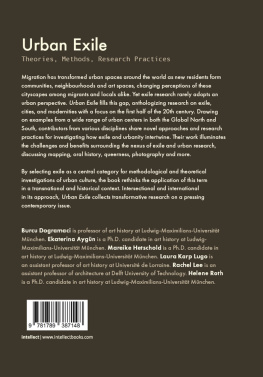
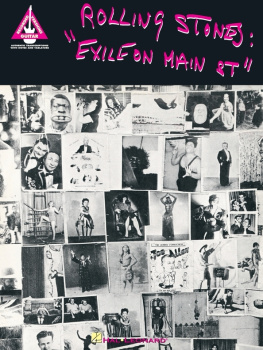



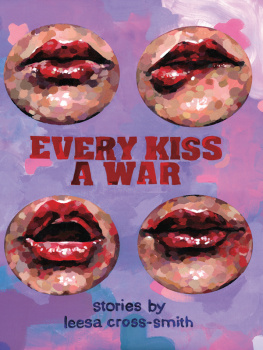
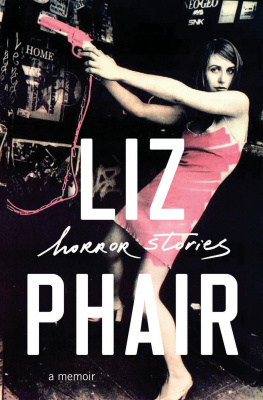
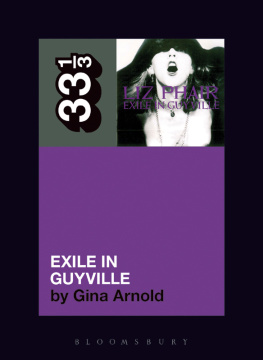

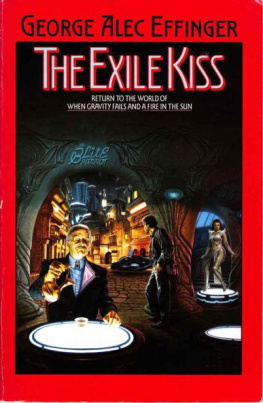
 EXILE IN GUYVILLEPraise for the series: It was only a matter of time before a clever publisher realized that there is an audience for whom Exile on Main Street or Electric Ladyland are as significant and worthy of study as The Catcher inthe Rye or Middlemarch The series is freewheeling and eclectic, ranging from minute rock-geek analysis to idiosyncratic personal celebration The New York Times Book Review Ideal for the rock geek who thinks liner notes just arent enough Rolling Stone One of the coolest publishing imprints on the planet Bookslut These are for the insane collectors out there who appreciate fantastic design, well-executed thinking, and things that make your house look cool. Each volume in this series takes a seminal album and breaks it down in startling minutiae. We love these. We are huge nerds Vice A brilliant series each one a work of real love NME (UK) Passionate, obsessive, and smart Nylon Religious tracts for the rock n roll faithful Boldtype [A] consistently excellent series Uncut (UK) We arent naive enough to think that were your only source for reading about music (but if we had our way watch out). For those of you who really like to know everything there is to know about an album, youd do well to check out Continuums 33 1/3 series of books PitchforkFor reviews of individual titles in the series, please visitour blog at 333sound.com and our website athttp://www.bloomsbury.com/musicandsoundstudiesFollow us on Twitter: @333booksLike us on Facebook: https://www.facebook.com/33.3books For a complete list of books in this series, see the back of this book Forthcoming in the series: Biophilia by Nicola Dibben Ode to Billie Joe by Tara Murtha The Grey Album by Charles Fairchild Fresh Fruit for Rotting Vegetables by Mike Foley Freedom of Choice by Evie Nagy Live Through This by Anwyn Crawford My Beautiful Dark Twisted Fantasy by Kirk Walker Graves Dangerous by Susan Fast Sigur Ros: ( ) by Ethan Hayden and many more Exile in Guyville Gina Arnold Bloomsbury Academic An imprint of Bloomsbury Publishing Inc 1385 Broadway 50 Bedford Square New York London NY 10018 WC1B 3DP USA UK www.bloomsbury.comBloomsbury is a registered trade mark of BloomsburyPublishing Plc First published 2014 Gina Arnold, 2014 All rights reserved. No part of this publication may be reproduced or transmitted in any form or by any means, electronic or mechanical, including photocopying, recording, or any information storage or retrieval system, without prior permission in writing from the publishers.
EXILE IN GUYVILLEPraise for the series: It was only a matter of time before a clever publisher realized that there is an audience for whom Exile on Main Street or Electric Ladyland are as significant and worthy of study as The Catcher inthe Rye or Middlemarch The series is freewheeling and eclectic, ranging from minute rock-geek analysis to idiosyncratic personal celebration The New York Times Book Review Ideal for the rock geek who thinks liner notes just arent enough Rolling Stone One of the coolest publishing imprints on the planet Bookslut These are for the insane collectors out there who appreciate fantastic design, well-executed thinking, and things that make your house look cool. Each volume in this series takes a seminal album and breaks it down in startling minutiae. We love these. We are huge nerds Vice A brilliant series each one a work of real love NME (UK) Passionate, obsessive, and smart Nylon Religious tracts for the rock n roll faithful Boldtype [A] consistently excellent series Uncut (UK) We arent naive enough to think that were your only source for reading about music (but if we had our way watch out). For those of you who really like to know everything there is to know about an album, youd do well to check out Continuums 33 1/3 series of books PitchforkFor reviews of individual titles in the series, please visitour blog at 333sound.com and our website athttp://www.bloomsbury.com/musicandsoundstudiesFollow us on Twitter: @333booksLike us on Facebook: https://www.facebook.com/33.3books For a complete list of books in this series, see the back of this book Forthcoming in the series: Biophilia by Nicola Dibben Ode to Billie Joe by Tara Murtha The Grey Album by Charles Fairchild Fresh Fruit for Rotting Vegetables by Mike Foley Freedom of Choice by Evie Nagy Live Through This by Anwyn Crawford My Beautiful Dark Twisted Fantasy by Kirk Walker Graves Dangerous by Susan Fast Sigur Ros: ( ) by Ethan Hayden and many more Exile in Guyville Gina Arnold Bloomsbury Academic An imprint of Bloomsbury Publishing Inc 1385 Broadway 50 Bedford Square New York London NY 10018 WC1B 3DP USA UK www.bloomsbury.comBloomsbury is a registered trade mark of BloomsburyPublishing Plc First published 2014 Gina Arnold, 2014 All rights reserved. No part of this publication may be reproduced or transmitted in any form or by any means, electronic or mechanical, including photocopying, recording, or any information storage or retrieval system, without prior permission in writing from the publishers.